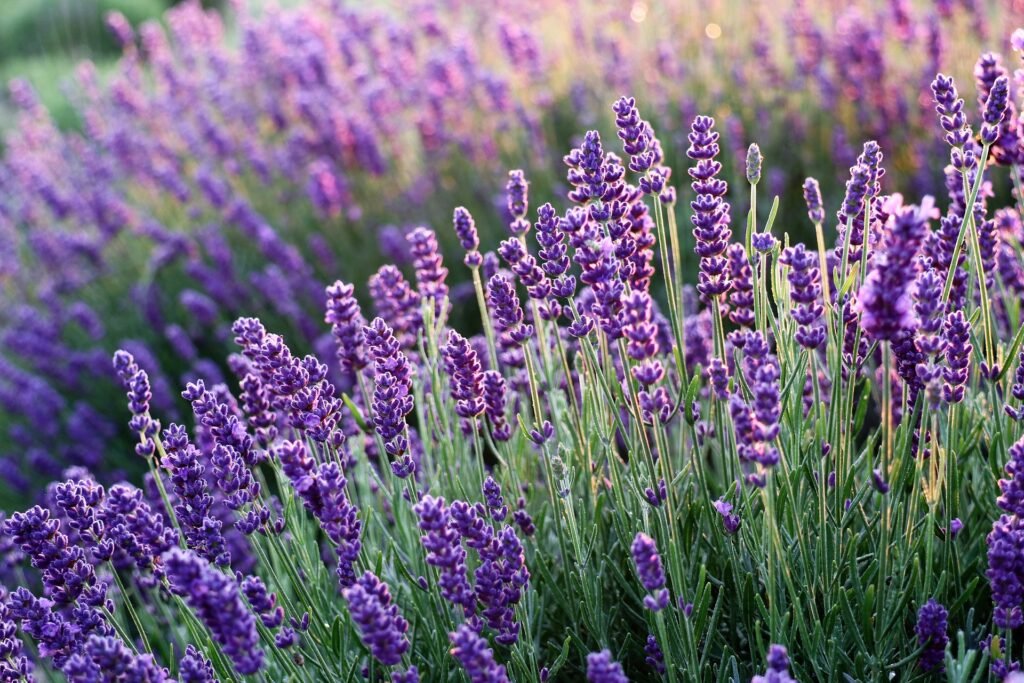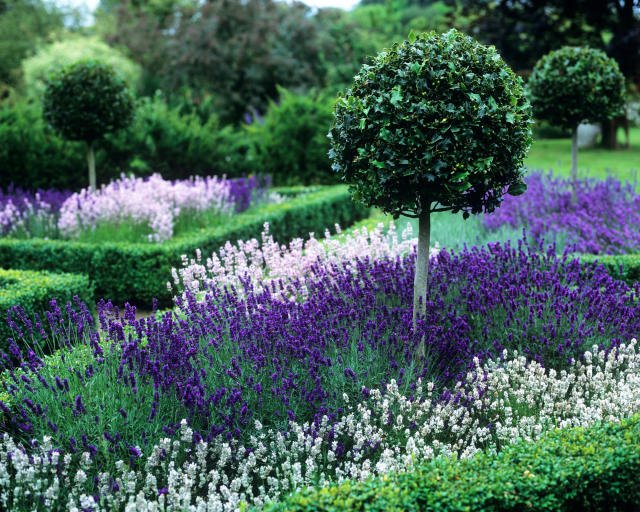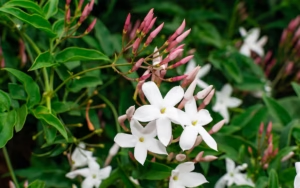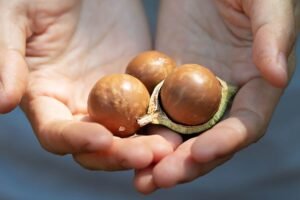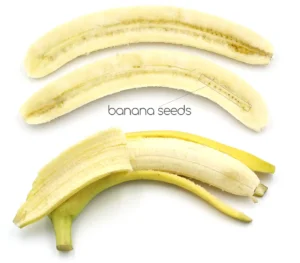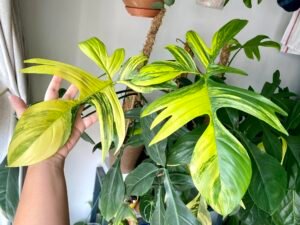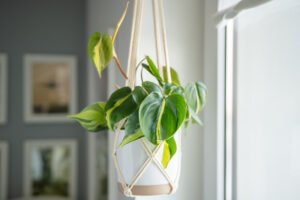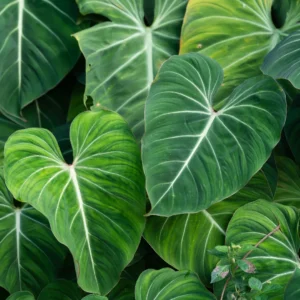Lavender is a versatile and fragrant herb that not only adds a touch of elegance to your garden but also provides benefits like attracting pollinators, soothing scents, and medicinal properties. Whether you want to cultivate lavender for its beauty, aroma, or its various uses, growing and caring for lavender plants can be a rewarding experience. This detailed guide will provide you with everything you need to know about lavender, from planting to harvesting.
Table of Key Information
| Common Name | Lavender |
|---|---|
| Botanical Name | Lavandula spp. |
| Family | Lamiaceae |
| Plant Type | Herbaceous Perennial |
| Mature Size | 12–36 inches tall, 12–24 inches wide |
| Sun Exposure | Full sun |
| Soil Type | Well-draining, sandy or loamy soil |
| Soil pH | 6.7–7.3 |
| Hardiness Zones | 4–9 (depending on variety) |
| Native Area | Mediterranean region |
| Toxicity | Non-toxic to humans and pets |
Planting and Transplanting Lavender
Lavender thrives in dry, well-draining soil with plenty of sun. When planting lavender, choosing the right location and preparing the soil are crucial to ensuring your lavender grows strong and healthy. Let’s dive deeper into the process of planting and transplanting lavender.
Choosing the Right Location
Lavender loves the sun and should be planted in an area that receives at least 6 to 8 hours of direct sunlight daily. Lavender prefers dry, well-draining soil, so it’s important to select a location that doesn’t retain water. Avoid planting lavender in low-lying areas where water tends to accumulate.
Preparing the Soil
Before planting, ensure the soil is well-draining and slightly alkaline. You can amend heavy soil with sand or gravel to improve drainage. Lavender prefers a soil pH between 6.7 and 7.3, so test your soil beforehand. If your soil is too acidic, you can add lime to increase the pH.
Planting Lavender
To plant lavender, dig a hole that’s slightly larger than the root ball of your plant. Space the plants 18 to 24 inches apart to allow adequate air circulation. Gently remove the lavender from its pot and place it in the hole. Fill in around the roots with soil, ensuring the crown (where the roots meet the stem) is level with the ground surface. Water thoroughly after planting but avoid overwatering, as lavender is susceptible to root rot.
Transplanting Lavender
If you need to transplant lavender, the process is similar to planting. However, lavender doesn’t like being moved, so try to minimize root disturbance. Dig up the plant and replant it in its new location, making sure the soil is well-drained and has adequate sunlight.
Lavender Care
Caring for lavender involves a few key steps that help maintain its health and vitality. From watering to fertilizing and managing growth, consistent care is essential for lavender plants to thrive.
Watering Lavender
Lavender is drought-tolerant and doesn’t require frequent watering. In fact, overwatering can lead to root rot. Water your lavender when the soil feels dry to the touch, but make sure the plant doesn’t sit in water. In the first year, you may need to water lavender more frequently until it establishes a robust root system. After that, water less often, allowing the soil to dry out completely between waterings.
Fertilizing Lavender
Lavender doesn’t need heavy fertilization. Too much fertilizer can lead to excessive foliage growth at the expense of flowers. To promote healthy growth, apply a light, balanced fertilizer in the spring. Organic compost or a slow-release fertilizer works best. Lavender plants grown in poor soil may need a bit more fertilizer to boost growth.
Mulching Lavender
While lavender doesn’t need a lot of extra care in terms of mulching, a light layer of mulch can help retain soil moisture and prevent weeds. However, avoid piling mulch too close to the stems, as this can cause the plant to rot. Keep the mulch a few inches away from the base of the lavender.
Types of Lavender
There are several types of lavender, each with unique characteristics. Understanding these different varieties can help you choose the best lavender for your garden or specific needs.
English Lavender (Lavandula angustifolia)
The most common type of lavender, English lavender, is known for its sweet scent and compact size. It thrives in cooler climates and is often used for making lavender sachets, essential oils, and dried flowers.
French Lavender (Lavandula dentata)
French lavender has a more unusual appearance with its frilled leaves and distinct flower spikes. It’s less hardy than English lavender and prefers warmer climates. French lavender is commonly used in ornamental gardening.
Spanish Lavender (Lavandula stoechas)
Spanish lavender features unique, pinecone-like flower heads and fragrant blooms. This variety is more drought-tolerant and heat-resistant than other types and is ideal for Mediterranean climates.
Lavandin (Lavandula x intermedia)
A hybrid between English and Portuguese lavender, lavandin has larger blooms and a more robust aroma. It’s commonly used in the production of lavender oils and is more heat-tolerant than English lavender.
Pruning Lavender
Pruning is essential for maintaining the health and appearance of lavender. Proper pruning promotes bushier growth, more flowers, and helps prevent the plant from becoming leggy.
When to Prune Lavender
Pruning should be done twice a year: once in the spring, just after the last frost, and again in late summer, after the plant has finished blooming. Early spring pruning encourages new growth, while summer pruning helps the plant focus on flower production rather than excessive foliage growth.
How to Prune Lavender
To prune lavender, use sharp, clean pruning shears to cut back the plant by about one-third of its size. Be careful not to cut into the woody base of the plant, as lavender does not regenerate well from old wood. Cut just above the leaves to encourage new growth. After blooming, trim back the spent flowers to prevent the plant from seeding.
Propagating Lavender
Lavender is relatively easy to propagate, and there are a few methods you can use to grow new plants.
Propagating by Cuttings
One of the most popular methods of propagation is taking softwood or semi-hardwood cuttings. In late spring or early summer, cut a 4-6 inch piece from a healthy lavender plant. Remove the leaves from the lower half of the cutting and dip the cut end in rooting hormone. Plant the cutting in a pot with well-draining soil and keep it in a warm, bright location. Keep the soil moist until roots develop, which should take 2-3 weeks.
Propagating by Seeds
Lavender can also be grown from seeds, though it’s a more time-consuming process. To grow lavender from seeds, start by planting the seeds indoors about 8-10 weeks before the last frost. Lavender seeds require cold stratification, so refrigerate them for 1-2 weeks before planting. Once the seeds sprout and the seedlings are strong enough, transplant them into the garden.
How to Grow Lavender From Seeds
Growing lavender from seeds is a rewarding process, though it requires patience. Here’s a step-by-step guide:
Starting Seeds Indoors
Start your lavender seeds indoors 8-10 weeks before the last frost date in your area. Use small pots or seed trays and fill them with seed-starting mix. Sprinkle the lavender seeds on top of the soil and lightly cover them with a thin layer of soil.
Germinating Lavender Seeds
Lavender seeds require cold stratification for successful germination. Place the pots in the refrigerator for 1-2 weeks before moving them to a warm, bright location. The temperature should be around 65-70°F. Keep the soil moist but not soggy. Lavender seeds typically take 14-21 days to germinate.
Transplanting Lavender Seedlings
Once the seedlings are large enough and the danger of frost has passed, transplant them into the garden. Choose a sunny spot with well-draining soil, and ensure the seedlings have enough space to grow.
Potting and Repotting Lavender
Lavender is often grown in containers, especially in areas with poor soil or limited space. Potting and repotting lavender are simple tasks that ensure the plant has enough room to thrive.
Choosing the Right Pot
When choosing a pot for lavender, make sure it has drainage holes to allow excess water to escape. Select a container that is at least 12-18 inches in diameter to give the plant enough space to grow. Use a well-draining potting mix, such as cactus or succulent mix.
Repotting Lavender
Lavender doesn’t need to be repotted frequently. In general, repot it every 2-3 years or when the plant becomes root-bound. Gently remove the lavender from its pot, trim back any overgrown roots, and place it in a larger pot with fresh soil. Be sure to keep the plant in a sunny location.
Overwintering Lavender
In colder climates, overwintering lavender can be a challenge. However, with a few simple steps, you can help your lavender survive through the winter months.
Winter Care for Lavender in Containers
If you have lavender in containers, move the pots to a sheltered location for the winter, such as a garage or basement. Ensure the plants still get some light during the winter months. Water sparingly, as lavender is dormant during the colder months and doesn’t require much moisture.
Winterizing Lavender in the Garden
In the garden, mulch around the base of the lavender to protect it from frost. Avoid mulching directly against the stems to prevent rot. In regions with severe winters, consider covering your lavender with a frost cloth for added protection.
Harvesting Lavender
Harvesting lavender at the right time ensures that you get the best quality flowers and essential oils.
When to Harvest Lavender
The best time to harvest lavender is when the buds have formed but before they fully open. This is when the flowers have the strongest fragrance and are ideal for drying or making lavender oil. Harvest in the morning, after the dew has dried, but before the heat of the day.
How to Harvest Lavender
To harvest lavender, cut the flower stems just above the leaves using sharp, clean shears. Gather the stems into small bundles and tie them with twine. Hang the bundles upside down in a cool, dry area with good air circulation to dry.
Uses for Lavender
Lavender is a versatile plant with a wide range of uses. From culinary to medicinal, lavender has been prized for centuries for its many benefits.
Aromatherapy
Lavender is widely used in aromatherapy for its calming effects. The essential oil is often diffused to reduce stress and anxiety. Lavender oil can also be added to bath water for a soothing soak.
Culinary Uses
Lavender can be used in cooking to add a floral, slightly sweet flavor to dishes. It’s commonly used in desserts like cakes and cookies, and it pairs well with honey, lemon, and herbs like thyme.
Medicinal Uses
Lavender has a long history of medicinal use, including as a remedy for headaches, insomnia, and anxiety. Lavender tea or lavender essential oil is often used to promote relaxation and sleep.
Common Problems With Lavender
While lavender is a relatively low-maintenance plant, it can still face some challenges. Below are some common problems you may encounter when growing lavender.
Root Rot
Root rot is one of the most common problems with lavender. It is caused by overwatering or poor drainage. To avoid root rot, ensure that your lavender is planted in well-draining soil and that it isn’t watered too frequently.
Powdery Mildew
Powdery mildew is a fungal disease that can affect lavender, especially in humid conditions. To prevent powdery mildew, space plants adequately to allow for air circulation and avoid overhead watering.
Common Pests & Plant Diseases
Lavender is generally resistant to pests, but it’s still susceptible to a few common issues. Here are some pests and diseases to watch out for.
Aphids
Aphids can infest lavender, feeding on the plant’s sap and causing the leaves to curl and yellow. To manage aphid infestations, spray the plant with insecticidal soap or use a natural predator like ladybugs.
Lavender Leaf Spot
Lavender leaf spot is a fungal disease that causes dark spots to appear on the leaves. To prevent leaf spot, avoid overhead watering and prune infected leaves promptly to stop the spread of the fungus.
How to Get Lavender to Bloom
If your lavender isn’t blooming as expected, there are a few things you can do to encourage flowers.
Ensure Adequate Sunlight
Lavender requires full sunlight to bloom well. If your plant isn’t getting enough sun, it may not produce many flowers. Move your lavender to a sunnier location to encourage blooming.
Prune Regularly
Regular pruning can help stimulate more flowers. By trimming back dead or leggy growth, you encourage the plant to put energy into producing blooms rather than unnecessary foliage.
FAQ
1. How often should I water lavender?
Lavender prefers dry conditions, so water it only when the soil is dry to the touch. Water deeply but infrequently, allowing the soil to dry out between waterings.
2. Can I grow lavender in pots?
Yes! Lavender grows well in pots, as long as the pot has proper drainage and the plant receives enough sunlight.
3. Does lavender attract bees?
Yes, lavender is known for attracting bees and other pollinators with its fragrant flowers.
4. How long does it take for lavender to bloom?
Lavender typically blooms in mid to late summer, about 2 to 3 months after planting.
5. Is lavender deer-resistant?
Yes, lavender is known for being deer-resistant due to its strong fragrance and taste.
Read also: How to Grow and Care for Pink Peonies: A Complete Guide

